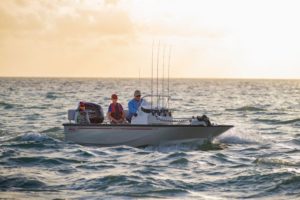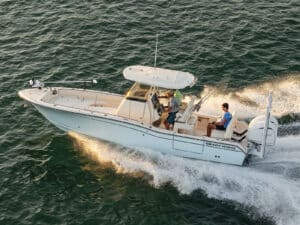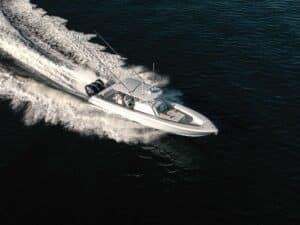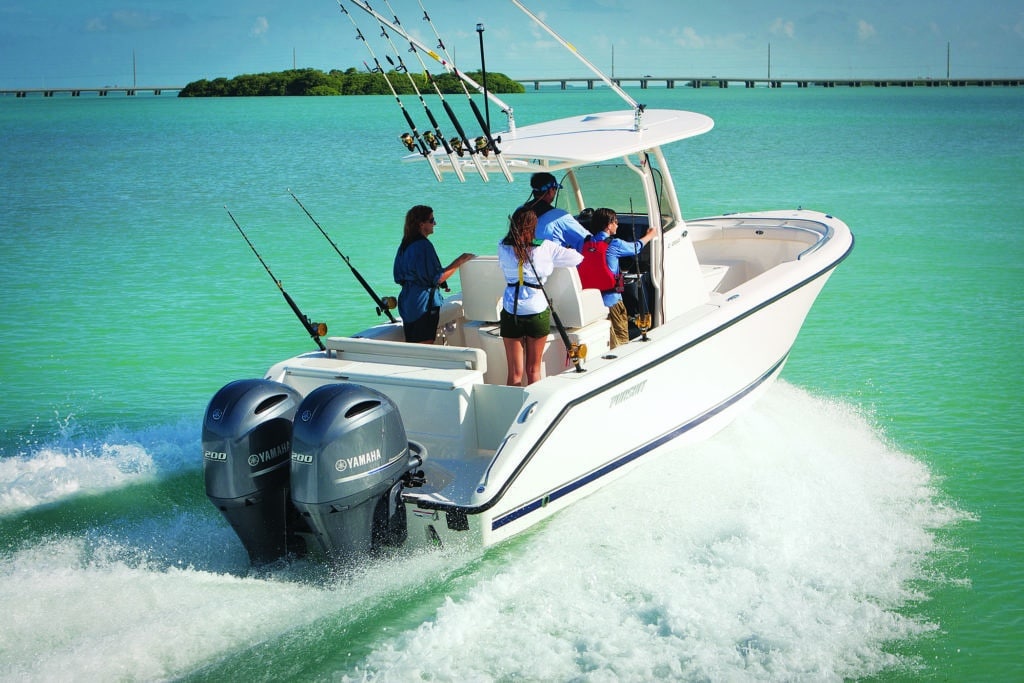
Choosing the Right Outboard Motor for Your Needs
Boating anglers face intriguing choices today when it comes to the popular 200 hp four-stroke outboard motor category. In the past, all 200 hp four-strokes used six-cylinder powerheads. Now, however, Mercury, Suzuki and Yamaha offer four-cylinder 200s, while keeping similarly rated six-cylinder motors in their lineups. (Honda offers just one 200, a V-6.)
This creates a perplexing question for boating anglers shopping for the best outboard motor in this power range, be it for a new boat or for re-powering an older one: Which should you choose, the four- or six‑cylinder model? And what’s the best outboard motor for the money?
Outboard industry experts say the answer depends on a number of major factors related to the type of boat, its usage and the angler’s expectations.
“You need to look at the application demands,” says Lawrence Teeling, product category manager for Mercury Marine’s 75 to 350 hp outboards. “What does the user want? In terms of torque, what does the vessel need? And how much weight can it handle?”
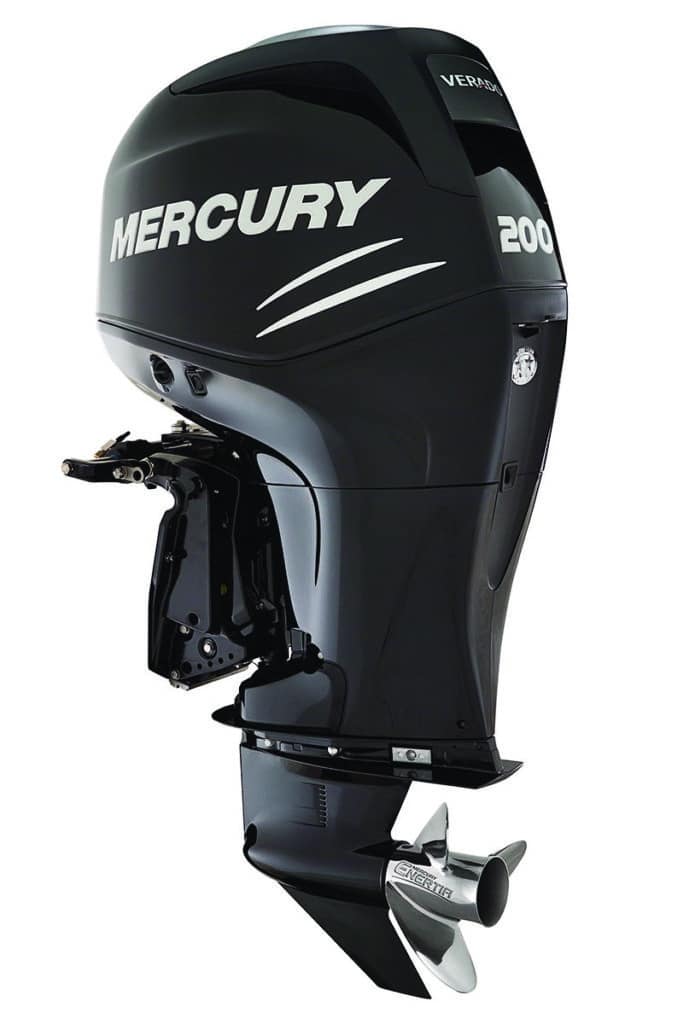
Mercury 200 Verado I-4
Torque Differences in Outboard Motors
Today’s six-cylinder 200 possesses greater displacement, largely because it has two more cylinders than does an in-line four-cylinder (I-4) of identical horsepower. As a result, six-cylinder versions develop their torque more quickly and over a broader range of revolutions per minute than do I-4 outboards, says David Meeler, marine product planning and information manager for Yamaha Marine.
The Yamaha F200 V-6, one of the best 200 hp outboard motors, features 3.3 liters of displacement. That’s 17.8 percent more than the Yamaha F200 I-4, with 2.8 liters, and that can make a big difference in acceleration. “With our F200 V-6, the torque comes on early,” Meeler explains. “All things being equal, including optimum propeller choices, the V-6 will blast out of the hole quicker than the F200 four-cylinder.”
So if your preference is to jump on plane as quickly as possible, you should look to six-cylinder outboards, whether in a single- or twin-engine application.
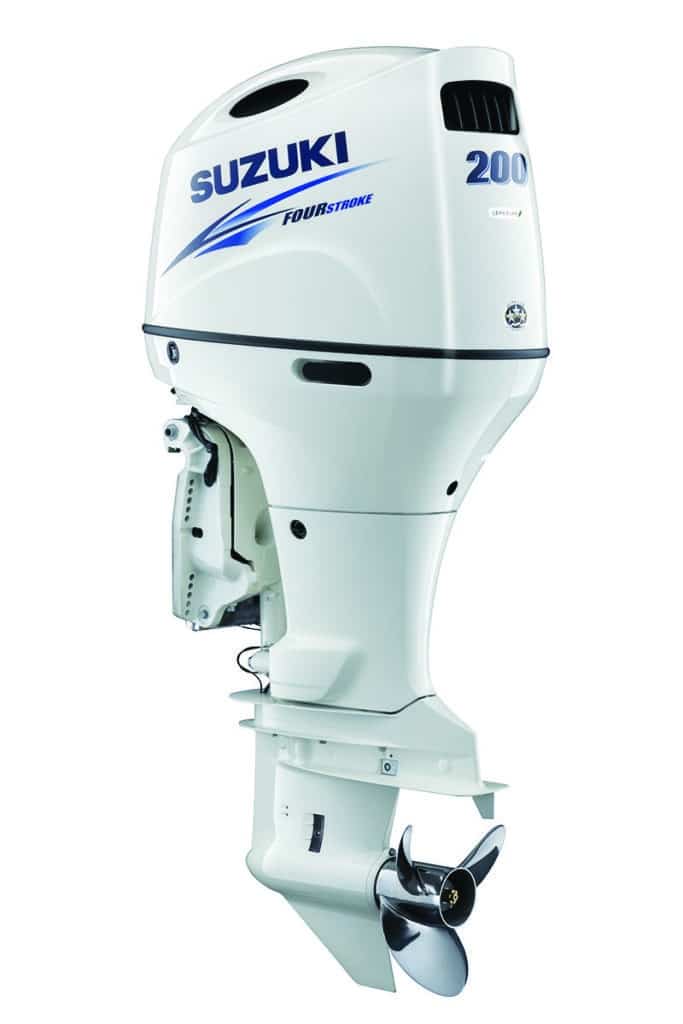
Suzuki’s DF200A I-4
Boat Weight
The weight of the boat ranks as one of the most critical factors in deciding between a four- and six-cylinder outboard, says Meeler. “Lightweight boats such as bay boats and center-consoles under 22 feet usually perform well with a single four-cylinder outboard,” he explains.
A larger, twin-engine center-console that is relatively light for its size might also perform nicely with twin I-4 outboards. Heavier boats, on the other hand, might need the broader torque curve provided by a six-cylinder outboard for adequate acceleration and to plane without struggling or overtaxing the engine(s).
“Because of the longer piston stroke, our [DT225] V-6 has more torque throughout its rpm range,” says David Greenwood, product planning manager for Suzuki Marine. “If a guy has a big, heavy twin-engine boat, he probably wants a pair of V-6s rather than I-4 outboards.”
Meeler concurs. “There really is no replacement for displacement when it comes to providing a fuller torque curve to power a heavy boat,” he says. “That’s why the F200 V-6 outboard is in the Yamaha line. It gives you six cylinders to spread out the load.”
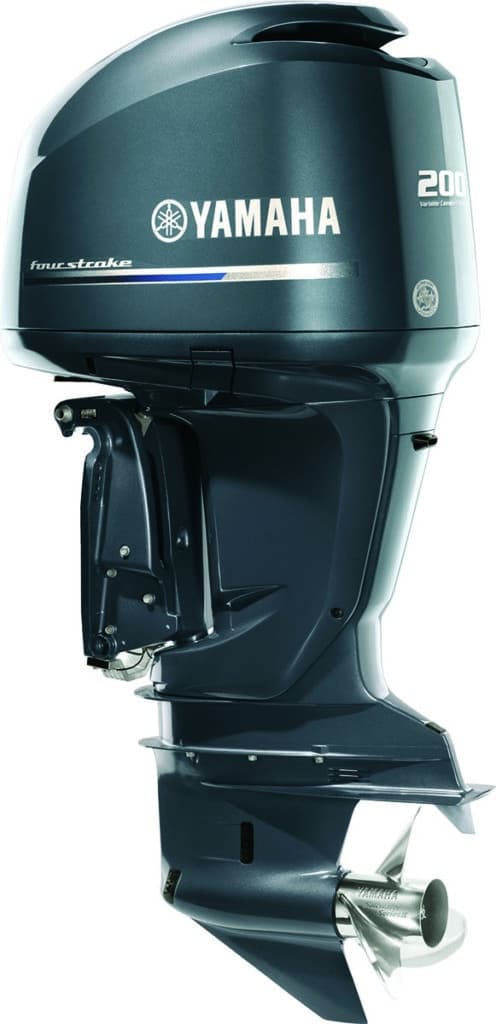
Yamaha Marine’s F200 V-6 Outboard
Hull Capacity
The ability of a boat’s hull to handle the weight of an outboard also plays into the equation when searching for the best outboard motor, particularly when re-powering boats that were originally designed for the older two-stroke engines, says Teeling.
“The older two-strokes were relatively light,” he points out. “But you can replace them with a newer four-stroke engine as long as you’re within 20 to 40 pounds [of the original two-stroke weight].”
That’s where the I-4 outboards come in. They can weigh substantially less than their six-cylinder counterparts, making them more on par with old two-strokes in terms of weight.
Mercury’s 200 Verado I-4, for instance, tips the scales at 510 pounds (with a 20-inch shaft). That’s 19.6 percent lighter than the 635-pound six-cylinder (Mercury uses an in-line six-block) 200 Verado Pro four-stroke with a 20-inch shaft.
“If a guy wants maximum horsepower but not the extra weight, the four-cylinder Verado 200 gives it to him,” says Teeling. Less weight can also translate to less draft, and that’s important to anglers who fish shallow water in craft such as bay boats. You can get into skinnier water and possibly catch more fish with a lighter outboard.
In addition, boating anglers who have always wanted twin engines, but whose boats are incapable of handling the weight of two six-cylinder outboards on the transom, can now opt to re-power with a pair of lighter I-4s.
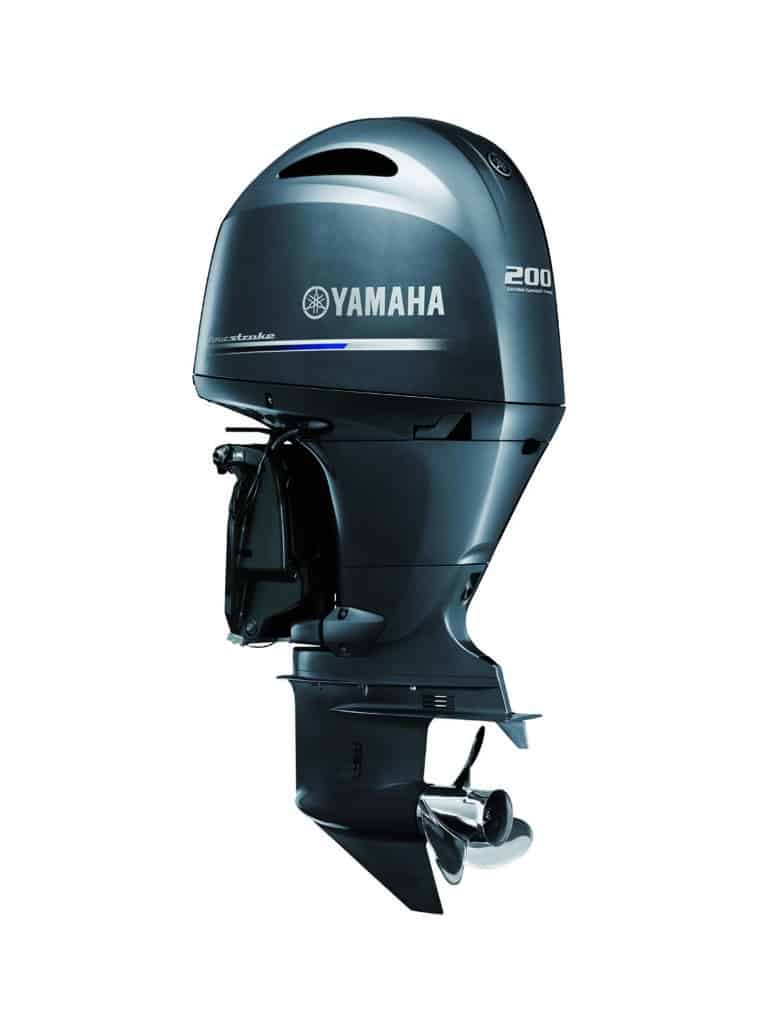
Yamaha Marine’s F200 I-4 Outboard
Fuel Efficiency in Outboard Motors
“All things the same, a four-cylinder burns less fuel [at cruising speed] versus a six-cylinder, largely because you are feeding 33 percent fewer cylinders,” says Greenwood. The boat is also carrying less weight with a four-cylinder, and that can contribute to better fuel efficiency, he points out.
To gain perspective, I looked at performance bulletins from Yamaha for the 3.3-liter 200 V-6 and 2.8-liter 200 I-4 run on the same model boat, a NauticStar 2200XS center-console.
In both tests (run on separate occasions), the boat achieved optimum fuel efficiency at 3,500 rpm and roughly the same speed (24.3 and 24.4 mph, respectively). The V-6 achieved 4.12 mpg, while the I-4 got 4.44 mpg. That’s 7.7 percent better fuel economy for the I-4, the result of burning less fuel — 5.5 gph versus 5.9 gph for the V-6.
On a heavier craft, the savings could dissipate because an I-4 might need to work harder and/or rev higher than a V-6 to keep the boat on plane. As indicated earlier, a six-cylinder with a broader torque range could be a better choice in such applications. In addition, an engine that does not work as hard will tend to last longer.
A captain who likes to run at wide-open throttle might experience worse fuel efficiency with an I-4. In the case of the NauticStar 2200XS, the Yamaha 200 V-6 achieved 2.64 mpg at wide-open throttle, while the 200 I-4 posted 2.23 mpg with the throttle pinned.
After a cursory review of 200 hp four-stroke outboard prices on the Internet, I found that an I-4 costs about $1,000 to $2,000 less than its six-cylinder counterparts, but I would not let the difference in price sway a decision. Rather, as the experts point out, your selection should hinge on the type of fishing boat, how you plan to run it, and the goals you set for performance and fuel efficiency.
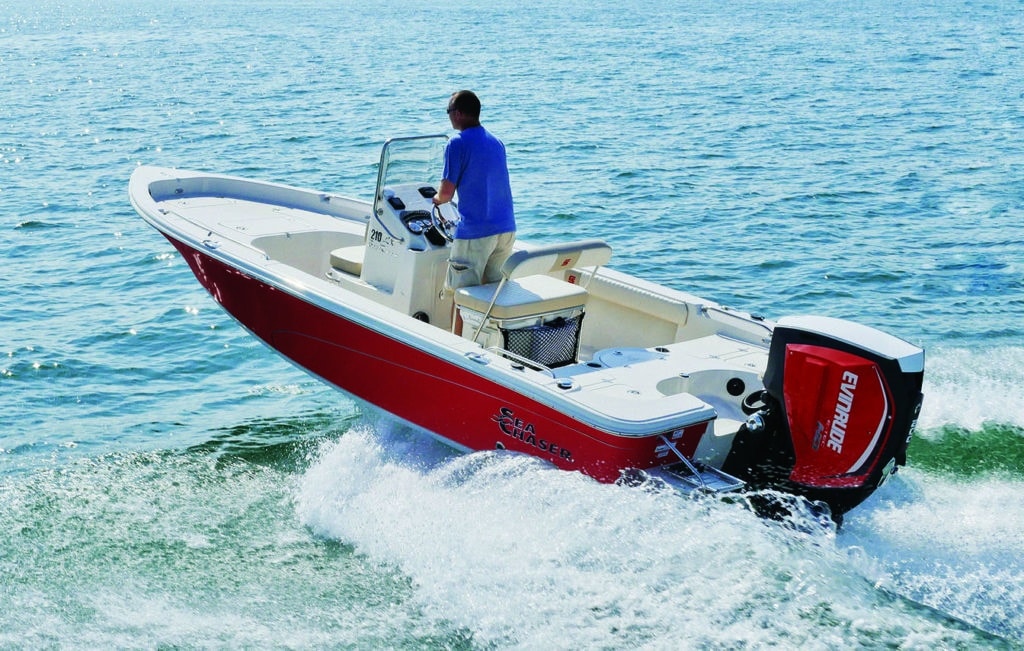
Evinrude 200 hp Outboards
Boating anglers considering a two-stroke Evinrude 200 might also become confused by their choices. The company offers more than one direct-fuel-injected two‑stroke V-6 outboards.
The new E-Tec G2 200 features 2.7 liters of cylinder displacement, while the heavier E-Tec G2 200 H.O. boasts a displacement of 3.44 liters. You can apply the same principles I outlined for four-cylinder four-strokes to the E-Tec G2 200, and use the six-cylinder principles for the G2 200 H.O.
We’ve learned that selecting the best outboard motor for your boat will depend on a number of factors. Who makes the best outboard motor is still up for debate, but we have listed several manufacturers in this article that should be in contention.

